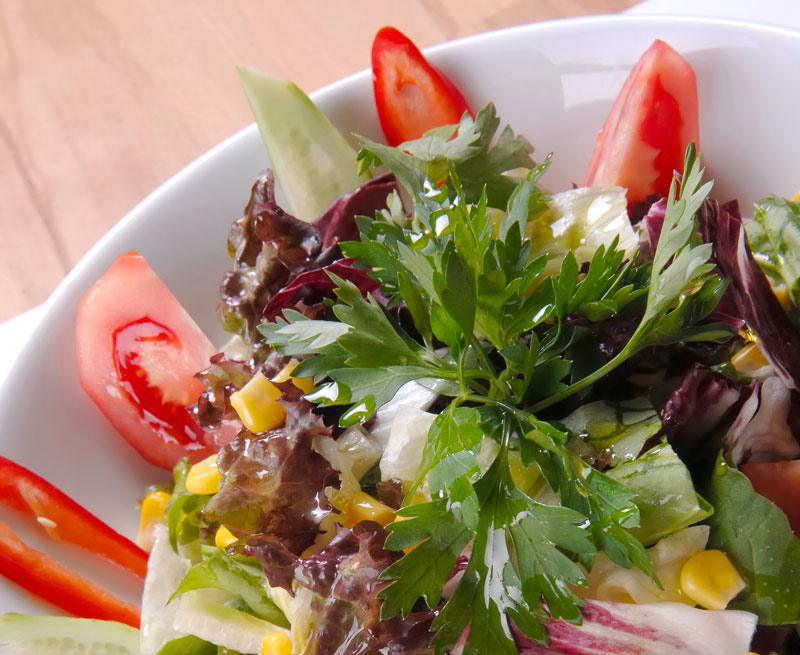I love Emergen-C, the powdered vitamin supplement sold at drug stores and minimarts. When I take it, I am buying into the myth that supplements will make me healthier. The fact is that supplements are not proved to make me any healthier and are not regulated by the FDA. So why do I take them?
Well, there is the possibility that supplements will make me healthier, but truthfully, they just make me feel good about myself. I call this the “perceived health effect.” For the millions of consumers who support the vitamin industry or drink Smartwater (including me), perceived health matters just as much as, if not more than, actual health. This same thought process is driving millions of daily dining decisions, and you can use this phenomenon to better serve your customers’ needs and build your business.
To further understand the trend, let’s discuss one of the most successful fine-dining restaurants in the world: Nobu. Nobu is a Japanese restaurant created by chef Nobu Matsuhisa, actor Robert De Niro, and famed restaurateur Drew Nieporent. It has spawned several copycat restaurants and helped define the more casual approach to high-end dining that is now so popular in urban centers around the world. Dining at Nobu involves sharing multiple dishes among friends, and usually consuming a couple of alcoholic beverages. Dishes are low in carbohydrates, for the most part, but are high in salt and, in cases like the famed Rock Shrimp Tempura, filled with fat, sugar, and cholesterol, the holy trinity of bad health.
CLOSER LOOK
DIG INN SEASONAL MARKET
FORMERLY KNOWN AS:
The Pump Energy Food
LOCATIONS: 5
WHERE: New York City
ESTABLISHED: 1997; revamped Fall 2011
SLOGAN: Real Food. Real Good. We care about food—where it comes from, how it's prepared, how it tastes, and how it makes you feel.
SIGNATURE ITEMS: Quality Meats, Grains & Greens, Market Sides
Despite this and the high percentage of sales that come from alcohol, most people believe that Nobu is a healthy restaurant. Why? Part of it is that Japanese food and fish are perceived to be healthier than your local burger or pizza joint, and sometimes they are. But my instincts tell me it is because when you leave the restaurant, you do not usually feel full or bloated. This, combined with the restaurant’s inherent aspirational nature, leaves most people feeling really good after a Nobu experience, even though their blood pressure, liver, and heart may not feel the same.
So while what defines “healthy” may be an ongoing debate, how to create “perceived health” is a very tangible and important discussion for the restaurant industry, especially quick service. Creating a dining experience that encourages your customers to perceive your food as healthy is vital to your success in today’s market. Customers no longer determine food’s nutritional information just by the numbers; it’s now a holistic analysis of where the food was produced and how it was cooked, and even the design of your restaurant.
For further proof, just look at TV commercials featuring happy, proud farmers growing food for multinational corporations; that’s my potato in that bag of organic kettle chips produced locally by hipsters in downtown Portland. They are full of fat, but the potatoes are organic and local, so who cares?
There exists today an inverse relationship between the nutritional value of food and its genuine healthiness. If the consumer is able to rationalize that the food he or she is choosing was made with high-quality ingredients, then the dish as a whole becomes healthier in their mind. Some may say this is an exaggeration, but I see this behavior every day in my restaurants and among my closest friends. Attracting health-conscious consumers is no longer a game of numbers. Gone are the days of Jared’s weight loss from eating Subway sandwiches. The sandwich giant’s campaigns now choose to focus on the “melting, mouthwatering goodness” of its Chipotle Steak & Cheese served on artisan, fresh-baked bread.
Another prime example of this health perception in quick service is Dig Inn Seasonal Market. Formerly known as The Pump Energy Food, this Manhattan mini-chain revamped its image in Fall 2011 by moving from a menu “meant to appeal to bodybuilding types, with locations next to gyms and an emphasis on high-protein, low-fat food,” to a menu of “all-natural proteins, local produce, and a greater focus on flavor,” according to its website. Dig Inn now appeals to customers who want “real food” in which all ingredients are wholesome. There are no more factory-frozen turkey burgers with nonfat cheese and only 350 calories. Americans are now eating braised, all-natural beef shoulder with organic whole-wheat orzo and a side of kale and apple salad. It’s American dining reimagined, June Cleaver meets Alice Waters.
The key to capitalizing on this trend is to understand your customers’ needs and make them feel good while fulfilling them. Your product’s perception is in your hands, and perception is reality—or in this case, Organic High Protein Locally Sourced Hormone Free Mac ‘N’ Cheese, Made to Order. Sounds delicious and nutritious, but is it?











